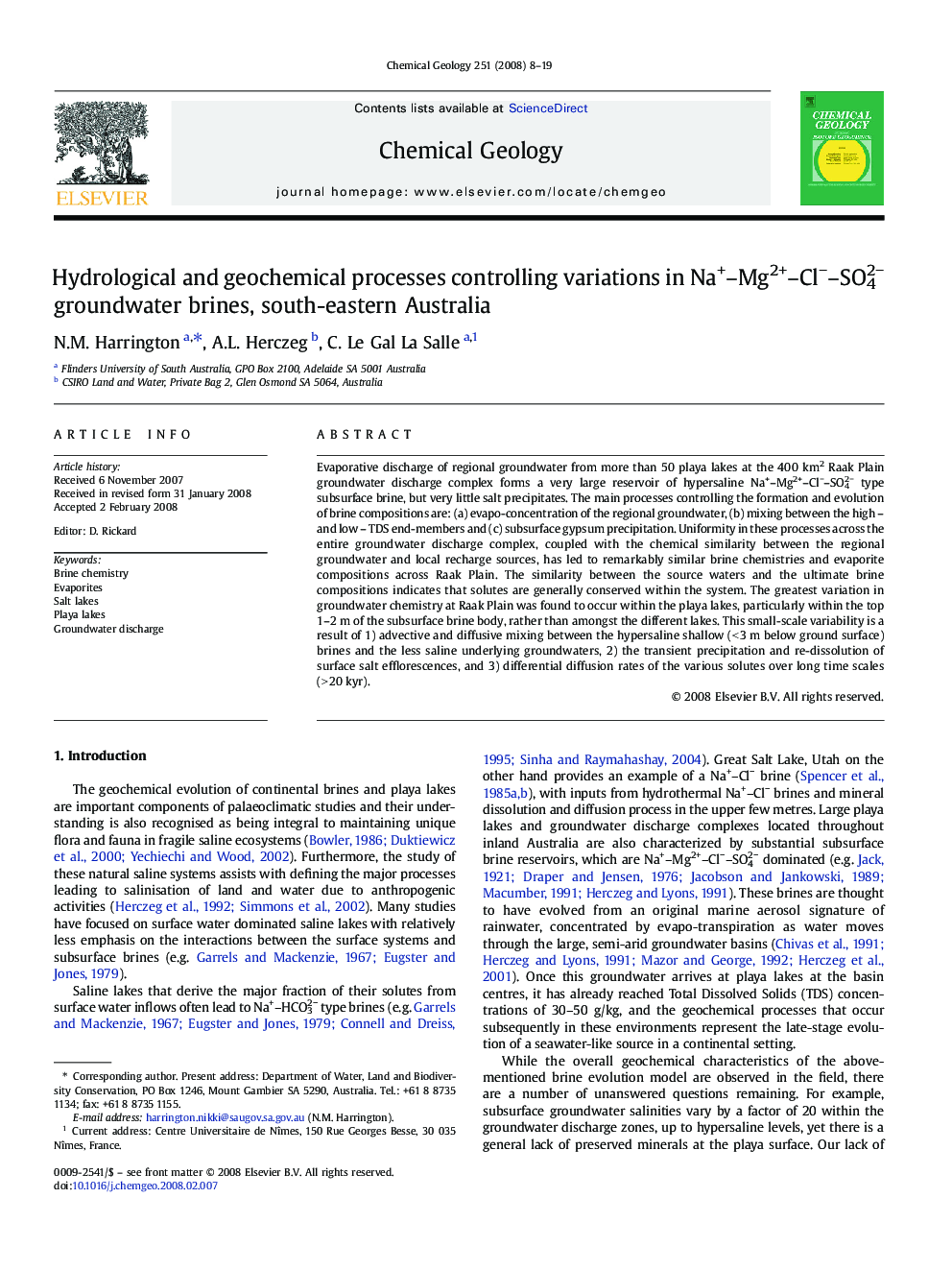| Article ID | Journal | Published Year | Pages | File Type |
|---|---|---|---|---|
| 4700690 | Chemical Geology | 2008 | 12 Pages |
Evaporative discharge of regional groundwater from more than 50 playa lakes at the 400 km2 Raak Plain groundwater discharge complex forms a very large reservoir of hypersaline Na+–Mg2+–Cl−–SO42− type subsurface brine, but very little salt precipitates. The main processes controlling the formation and evolution of brine compositions are: (a) evapo-concentration of the regional groundwater, (b) mixing between the high – and low – TDS end-members and (c) subsurface gypsum precipitation. Uniformity in these processes across the entire groundwater discharge complex, coupled with the chemical similarity between the regional groundwater and local recharge sources, has led to remarkably similar brine chemistries and evaporite compositions across Raak Plain. The similarity between the source waters and the ultimate brine compositions indicates that solutes are generally conserved within the system. The greatest variation in groundwater chemistry at Raak Plain was found to occur within the playa lakes, particularly within the top 1–2 m of the subsurface brine body, rather than amongst the different lakes. This small-scale variability is a result of 1) advective and diffusive mixing between the hypersaline shallow (< 3 m below ground surface) brines and the less saline underlying groundwaters, 2) the transient precipitation and re-dissolution of surface salt efflorescences, and 3) differential diffusion rates of the various solutes over long time scales (> 20 kyr).
